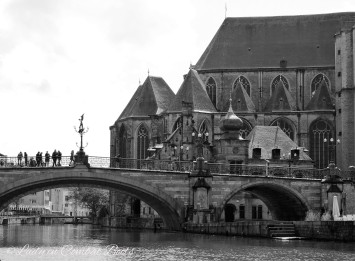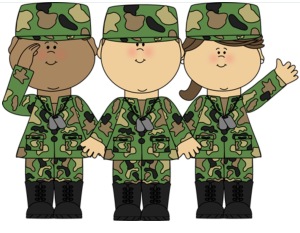Yummmmmmmmmm
21 Jul 2017 Leave a comment
in daily prompt, fun facts, My Thoughts, this day in history, Thought for the Day. Tags: food, junk
Memories
15 Jul 2017 Leave a comment
in Awareness, daily prompt, Family, landmark, My Thoughts, Thought for the Day., Uncategorized Tags: boat, boblo, island
National Mac and Cheese Day
14 Jul 2017 Leave a comment
in fun facts, this day in history, Thought for the Day., today in history Tags: cheese, day, mac
One of the classic comfort foods earns a place of honor on July 14. It is National Mac and Cheese Day!

Made with macaroni noodles, cream or milk, and the golden goodness of cheese, mac and cheese shines as a side dish but can stand on its own as a main dish as well. From the classic mac and cheese with cheddar or American cheeses to the spicy cowboy mac with bacon and jalapenos, there’s a combination for everyone. Mix up the cheeses or load up on seasonings, set the broiler for a couple of minutes at the end of the cooking time and let the cheese get a nice toasty crust.
HOW TO OBSERVE
Enjoy some mac and cheese! Use #NationalMacAndCheeseDay to share on social media.
HISTORY
Within our research, we were unable to identify the creator of National Mac and Cheese Day.
There are over 1,500 national days. Don’t miss a single one. Celebrate Every Day with National Day Calendar!
National French Fry Day July 13
13 Jul 2017 Leave a comment
in fun facts, My Thoughts, Thought for the Day., thought of the day, today in history Tags: day, French, fry

Each year on July 13, many people will participate in National French Fry Day by enjoying one of the many varieties of the classic food.
French fries, also known as chips, fries, finger chips or French-fried potatoes, are batons of deep-fried potatoes and are common fixtures at fast food restaurants that are loved by adults and kids alike!
A wide selection of condiments such as ketchup, ranch dressing, vinegar, mayonnaise, honey mustard, cheese and many more compliment French fries. Sweet potatoes make an alternate, healthier offering of fries found on menus around the country. Other varieties are baked and come in unusual shapes such as curls, waffles, crinkle or tornado cut.
The expression “French Fried Potatoes” first occurs in print in English in the 1856 work Cookery for Maids of All Work by E. Warren.
It is believed by some that the term “French” was introduced to the potatoes when the American soldiers arrived in Belgium during World War I and consequently tasted Belgian fries. It is suggested that they called them “French” as it was the official language of the Belgian Army at that time.
HOW TO OBSERVE
To celebrate National French Fry Day, share some French fries with your friends and have them seasoned, cut and shaped how you like them! Post on social media using #NationalFrenchFryDay .
HISTORY
Within our research, we were unable to find the creator or origin of National French Fry Day.
I am a Michigander!!
12 Jul 2017 Leave a comment
in Awareness, fun facts, landmark, landscape, My Thoughts, mystery, thought of the day, today in history Tags: michigan
For all my fellow Michiganders!!!
THIS IS MICHIGAN …

Detroit is known as the car capital of the world.
Alpena is the home of the world’s largest cement plant. (I live here)
Rogers City boasts the world’s largest limestone quarry.
Elsie is the home of the world’s largest registered Holstein dairy herd.
Michigan is first in the United States production of peat and magnesium compounds and second in gypsum and iron ore..
Colon is home to the world’s largest manufacturer of magic supplies….
The state Capitol with its majestic dome was built in Lansing in l879.
Although Michigan is often called the Wolverine State , there are no longer wolverines in Michigan.
(However, one was spotted in 2007, so there are some. )
Michigan ranks first in state boat registrations.
Our Flag
04 Jul 2017 Leave a comment
in daily prompt, Military, My Thoughts, thought of the day, today in history, Uncategorized Tags: 4th, flag, holiday
The Story of the Fourth of July
04 Jul 2017 Leave a comment
in Awareness, children, Family, fun facts, holiday, july, My Thoughts, this day in history, Thought for the Day., Uncategorized Tags: 4th, holiday, july
The Declaration of Independence
We celebrate American Independence Day on the Fourth of July every year. We think of July 4, 1776, as a day that represents the Declaration of Independence and the birth of the United States of America as an independent nation.
But July 4, 1776 wasn’t the day that the Continental Congress decided to declare independence (they did that on July 2, 1776).
It wasn’t the day we started the American Revolution either (that had happened back in April 1775).
And it wasn’t the day Thomas Jefferson wrote the first draft of the Declaration of Independence (that was in June 1776). Or the date on which the Declaration was delivered to Great Britain (that didn’t happen until November 1776). Or the date it was signed (that was August 2, 1776).
So what did happen on July 4, 1776?
The Continental Congress approved the final wording of the Declaration of Independence on July 4, 1776. They’d been working on it for a couple of days after the draft was submitted on July 2nd and finally agreed on all of the edits and changes.
July 4, 1776, became the date that was included on the Declaration of Independence, and the fancy handwritten copy that was signed in August (the copy now displayed at the National Archives in Washington, D.C.) It’s also the date that was printed on the Dunlap Broadsides, the original printed copies of the Declaration that were circulated throughout the new nation. So when people thought of the Declaration of Independence, July 4, 1776 was the date they remembered.
In contrast, we celebrate Constitution Day on September 17th of each year, the anniversary of the date the Constitution was signed, not the anniversary of the date it was approved. If we’d followed this same approach for the Declaration of Independence we’d being celebrating Independence Day on August 2nd of each year, the day the Declaration of Independence was signed!
How did the Fourth of July become a national holiday?
For the first 15 or 20 years after the Declaration was written, people didn’t celebrate it much on any date. It was too new and too much else was happening in the young nation. By the 1790s, a time of bitter partisan conflicts, the Declaration had become controversial. One party, the Democratic-Republicans, admired Jefferson and the Declaration. But the other party, the Federalists, thought the Declaration was too French and too anti-British, which went against their current policies.
By 1817, John Adams complained in a letter that America seemed uninterested in its past. But that would soon change.
After the War of 1812, the Federalist party began to come apart and the new parties of the 1820s and 1830s all considered themselves inheritors of Jefferson and the Democratic-Republicans. Printed copies of the Declaration began to circulate again, all with the date July 4, 1776, listed at the top. The deaths of Thomas Jefferson and John Adams on July 4, 1826, may even have helped to promote the idea of July 4 as an important date to be celebrated.
Celebrations of the Fourth of July became more common as the years went on and in 1870, almost a hundred years after the Declaration was written, Congress first declared July 4 to be a national holiday as part of a bill to officially recognize several holidays, including Christmas. Further legislation about national holidays, including July 4, was passed in 1939 and 1941.
Day Ten: “Architecture” — Go Monochrome Developing Your Eye
03 Jul 2017 Leave a comment
in Photo Challenge, photo of the day, photo101, Uncategorized, weekly photo challenge Tags: #developingyoureye, architecture, monochrome
Day Ten: “Architecture” — Go Monochrome
When we talk about monochrome in photography, we’re referring to images developed or executed in black and white or in varying tones of only one color.
Today, think about how black, white, gray, and the shades in between can interact in your frame in dynamic ways. As you compose your architecture shot, look for sharp lines, distinct patterns, defined shapes, large surface areas, and very light and very dark colors.
If you’ve never shot in black in white, many devices and phone cameras let you switch to black and white shooting mode right in the camera. In the iPhone, for example, select the Mono, Tonal, or Noir settings to shoot in monochrome.
Learn more about black and white photography and get inspired by moody, dramatic images in Merilee’s great tutorial on shooting in black and white.
Day Nine: “A Pop of Color” Developing Your Eye
02 Jul 2017 2 Comments
in photo, Photo Challenge, photo of the day, Uncategorized Tags: #developingyoureye, color, photography, pop



 Day Nine: “A Pop of Color” — Incorporate Color
Day Nine: “A Pop of Color” — Incorporate Color
The colors in our photographs are evocative and rouse emotions within us. Color can elevate a mundane image into something beautiful and intriguing, and can tell a tale within the frame.
Today, pay attention to how color affects your image. Let color be the star!
Today’s Tip: Keep it simple: experiment with only one color.
Visit the resource page for tips on incorporating color. Remember to tag your post with #developingyoureye and check the Reader to see posts from fellow course participants!












